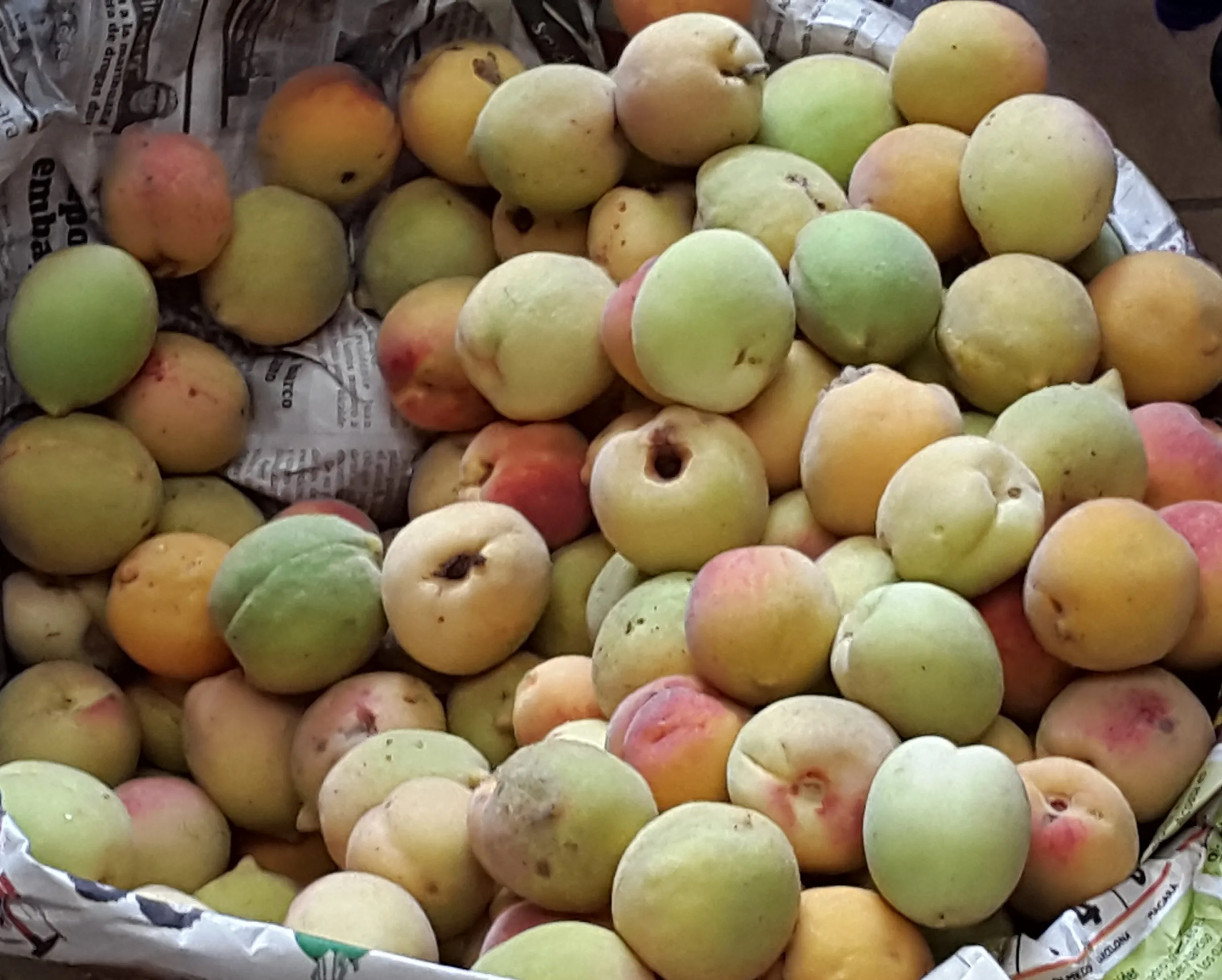So you want to grow the best food ever? (Part 1)
By Rob Gray
There’s a lot more to growing the best food ever than you think, more than can be covered in a single article. So, in this article I will present an overview of six fundamental principles I believe necessary to produce the highest quality, fresh ingredients. Why? Because the best food ever can’t be made from poor ingredients. To the principles.
- Research and Planning

Are you looking for fresh?
For what ultimately became the GRAN ROCA Project, my first task was to come up with a list of what I wanted to grow. As I intended to start a permaculture farm, I had a lengthy list of vegetables and tree and plant fruits that required research and study. I also wanted to be able to raise cattle, pigs and chickens. As I wrote in my article, What Was I Thinking When I Moved From the U.S. to Ecuador, it was a long process to identify the right place (location, weather, water, etc.) with the right land. People would always ask me, “What are you planning on growing?” and I would answer, “A Mercado“. I had planned to have a commercial market on the land that would be supplied by the farm. This made a search for an accessible location even more challenging.
Choosing plants or trees that are unsuitable for the land is one of the biggest mistakes people make when starting a farm or garden. Make sure your choices take into account the seasons, weather, water, etc. I remember hearing a lecture some years ago where the presenter said: “The two questions I get asked most frequently are, 1. How do I keep this plant alive when it wants to die? and, 2. How do I kill this plant that just won’t die?” There is a good chance that people who ask these questions are planting the wrong thing in the wrong place.

Same corn every year with low yield and poor quality.
Another common practice is what is referred to as mono-cropping. This is characterized by someone growing only one crop on his land and plants this crop in the same place every year. We have neighbors planting their farms every year with the same crop their parents before them planted. Over time, this practice degrades the land, encourages soil borne diseases, makes a permanent home for pests, and ultimately undermines the health of the farm resulting in the reduction of the yield and quality of the crop. Do your research and put together a solid plan.
- Observation, Flexibility and Learning
In spite of all of the time spent designing and executing your carefully crafted plan, there will be things that simply don’t work. And at GRAN ROCA that was absolutely the case as I wrote in my article, A Goat in Sheep’s Clothing, as we observed our Sheep damaging our trees and crops. We were flexible and made several adjustments to our design, but when those didn’t work, we ultimately learned what we needed to do.
We’ve had issues with a variety of crops as well. Our observations and learning from subsequent experiments have led us to using a new, narrower bed structure and replacing most of our sprinklers with drip irrigation. Our observations have taught us to change the way we grow our strawberries and blackberries and we are excited to observe and learn from this new design.
We also continue to observe our chickens closely and have already made changes in our feed and feeders. And, we hope to learn more as we have other planned operational improvements to try as well.
- Plant and Seed Selection
I cannot emphasize enough how important it is to grow the best tree and plant varieties available. You can’t grow the best food ever from poor quality planting stock. Many people plant things and have no idea how good they are or how they are going to taste. At GRAN ROCA, when we purchase trees, we look for them to be grafted from parent trees that we can examine to check out their health and vigor. We especially want to taste the fruit from these parent trees and only after tasting, make our purchase. We can then know how the fruit tastes on our baby trees even though they have not yet produced any. (Think about that.)
Most of the crops at GRAN ROCA are produced from seed. We use almost all Heirloom Fruit and Vegetable seeds. These are the seed varieties that have been saved and passed down over many generations and they represent the best tasting, most delicious varieties available. These are the ingredients that enable you to make the best food ever!
- Growing Sustainably
As good as the plants and seeds are, they must be grown in a sustainable way that improves soil fertility and the environment. Crops can more easily resist disease, survive drought, and tolerate insects when grown in good soil. Cultural practices must be followed including adding compost, animal manures, green manures, and cover crops to improve the soil fertility and structure, as well as, employ crop rotation, and management of weeds, pests and diseases without the use of synthetic chemicals which are known to cause disease and are hazardous to all living things. Without these practices, the quality of the soil and the surrounding environment will decline which will naturally reduce the quality, flavor and health benefits of the food produced.
At GRAN ROCA, we have spent considerable effort improving soil fertility and structure using compost, animal manures, and green manures as well as practice crop rotation and weed and pest management without synthetic chemicals.
- Harvesting Ripe
Sounds like a no-brainer, right? Not at all. Harvesting practices are all over the map depending on the quality of the crop, the knowledge and discipline of the harvesters, and the number of harvests afforded a crop. Sometimes a crew will be hired to clean out all of the fruit regardless of ripeness. It’s fast and cheap, but who wants to eat randomly picked under-ripe or over-ripe produce regardless of the price? What might surprise you even more is that the majority of farmers that my son, Jourdan, and I meet, don’t eat the crops they produce. You might ask a farmer, “Hey, how are your Mangoes this week?” and get a response, “Haven’t had a chance this year to try them. But they look pretty good.” This kind of stuff just drives me nuts as I express in my article, Rob the Snob.

A mix of under-ripe, over-ripe and damaged fruit at a market.
The first thing my son and I do when we go to a farm is taste the fruits and/or vegetables. We want to know what ripe looks like and if they are consistent. You can only know that by tasting. After picking and tasting a few samples, we are able to know what everything tastes like before we pick it. That’s what makes a good harvester. And, of course, that’s what we do at the GRAN ROCA farm.
- Farm to Table
Probably the hardest thing to do in this age of trucking and warehouses is to get something fresh from the farm onto your table. Fresh food, whether it be fruits, vegetables or meats, all degrade rapidly. Refrigeration can slow down the process, but it doesn’t stop it. So, if it takes a week or two before the produce gets to your refrigerator, you will have significant nutrient loss with texture and flavor loss as a result. If you are looking to make the best food ever, the ingredients will need to be in your kitchen as close to harvesting as possible. That is why at GRAN ROCA we harvest our ripe produce in the morning and make it available to our customers in the afternoon. Customers at our markets comment that they can smell the difference. Now that’s fresh produce.
I hope this overview helps readers understand some of the behind the scenes work and challenges of trying to produce the best food ever. When writing a general article like this, it often stimulates further questions by the reader. There are plans to write additional articles on this topic and so if you have questions on the topics of farming, food and wellness, you can write them below in the comments or send an email to info@granroca.net and we’ll try to answer them in future articles.
________________
 Rob Gray runs the Gran Roca Project, (www.granroca.net), a sustainable commercial permaculture farm on a landmark property in the Yunguilla Valley, southwest of Cuenca. High quality tree fruits, berries, and a large variety of both native and heirloom vegetables and herbs are produced with pastured cattle and chickens also integrated into the mix. Rob has recently started selling his fresh produce on the farm and in Cuenca. He also publishes a weekly newsletter of the goings-on at the farm; you can sign-up on his website.
Rob Gray runs the Gran Roca Project, (www.granroca.net), a sustainable commercial permaculture farm on a landmark property in the Yunguilla Valley, southwest of Cuenca. High quality tree fruits, berries, and a large variety of both native and heirloom vegetables and herbs are produced with pastured cattle and chickens also integrated into the mix. Rob has recently started selling his fresh produce on the farm and in Cuenca. He also publishes a weekly newsletter of the goings-on at the farm; you can sign-up on his website.


















